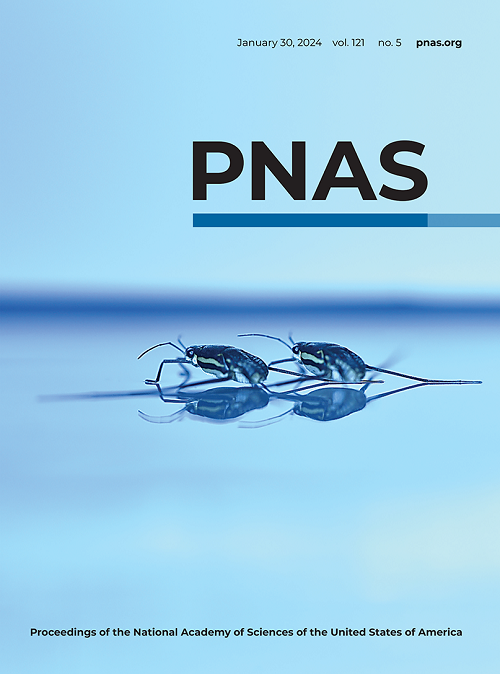记忆相关神经元的重新激活会诱导竞争神经元群受到下游抑制
IF 9.4
1区 综合性期刊
Q1 MULTIDISCIPLINARY SCIENCES
Proceedings of the National Academy of Sciences of the United States of America
Pub Date : 2025-04-01
DOI:10.1073/pnas.2410101122
引用次数: 0
摘要
本文章由计算机程序翻译,如有差异,请以英文原文为准。
Reactivation of memory-associated neurons induces downstream suppression of competing neuronal populations
Inducing apparent memory recall by tagging and optogenetically reactivating cells in the hippocampus was demonstrated over a decade ago. However, the hippocampal dynamics resulting from this reactivation remain largely unknown. While calcium imaging is commonly used as a measure of neuronal activity, GCaMP, the most common calcium indicator, cannot be used with optogenetic neuronal reactivation because both require blue light excitation. To resolve this overlap, we demonstrate optogenetic reactivation with a red-shifted opsin, ChrimsonR. We then conduct dual-color calcium imaging in CA1 during memory reactivation in DG. In addition to measuring population dynamics in CA1, CA1 cells tagged during the original experience were identified. In the fear-conditioned animals (FC+), nontagged cells in CA1 decreased their firing rate during stimulation, while tagged cells maintained their activity level. In the FC+ animals, as the behavioral effect of stimulation decreased across days, so did the changes in neural activity during stimulation. Our results both demonstrate the technical feasibility of calcium imaging during optogenetic reactivation of memory-associated neurons and advance our understanding of the dynamics underlying this reactivation.
求助全文
通过发布文献求助,成功后即可免费获取论文全文。
去求助
来源期刊
CiteScore
19.00
自引率
0.90%
发文量
3575
审稿时长
2.5 months
期刊介绍:
The Proceedings of the National Academy of Sciences (PNAS), a peer-reviewed journal of the National Academy of Sciences (NAS), serves as an authoritative source for high-impact, original research across the biological, physical, and social sciences. With a global scope, the journal welcomes submissions from researchers worldwide, making it an inclusive platform for advancing scientific knowledge.

 求助内容:
求助内容: 应助结果提醒方式:
应助结果提醒方式:


